Instructor Planning Guide
Activities
What activities are associated with this chapter?
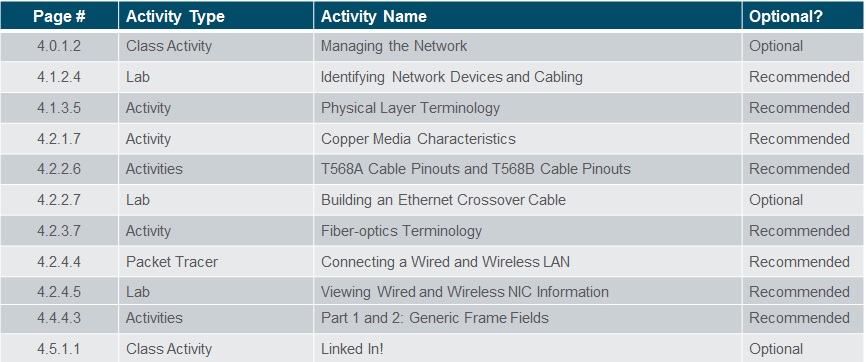
Assessment
Students should complete Chapter 4, “Assessment” after completing Chapter 4.
Quizzes, labs, Packet Tracers and other activities can be used to informally assess student progress.
Sections & Objectives
4.1 Physical Layer Protocols
♦ Explain how physical layer protocols and services support communications across data networks.
♦ Identify device connectivity options.
♦ Describe the purpose and functions of the physical layer in the network.
♦ Describe basic principles of the physical layer standards.
4.2 Network Media
♦ Build a simple network using the appropriate media.
♦ Identify the basic characteristics of copper cabling.
♦ Build a UTP cable used in Ethernet networks. (scope – does not include cabling area discussion)
♦ Describe fiber optic cabling and its main advantages over other media.
♦ Connect devices using wired and wireless media.
4.3 Data Link Layer Protocols
♦ Explain the role of the data link layer in supporting communications across data networks.
♦ Describe the purpose and function of the data link layer in preparing communication for transmission on specific media.
4.4 Media Access Control
♦ Compare media access control techniques and logical topologies used in networks.
♦ Compare the functions of logical topologies and physical topologies.
♦ Describe the basic characteristics of media access control methods on WAN topologies.
♦ Describe the basic characteristics of media access control methods on LAN topologies.
♦ Describe the characteristics and functions of the data link frame.
Network Access
4.1 – Physical Layer Protocols
4.1.1 – Physical Layer Connection
4.1.1.1 – Types of Connections
Before network communications can occur, a physical connection to a local network must be established.
A physical connection can be a wired connection using a cable or a wireless connection using radio waves.
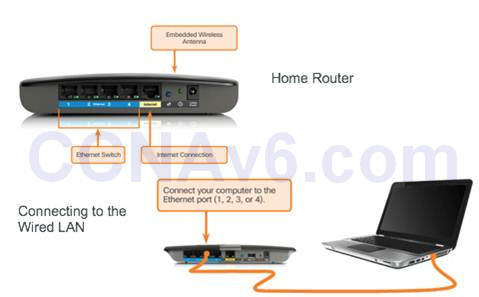
4.1.1.2 – Network Interface Cards
Network Interface Cards (NICs) connect a device to a network.
Used for a wired connection.
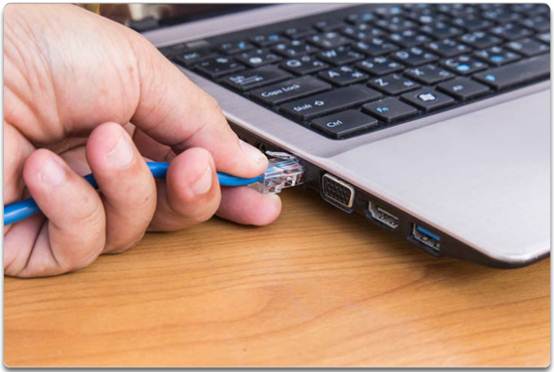
Wireless Local Area Network (WLAN) NICs are used for wireless connections.
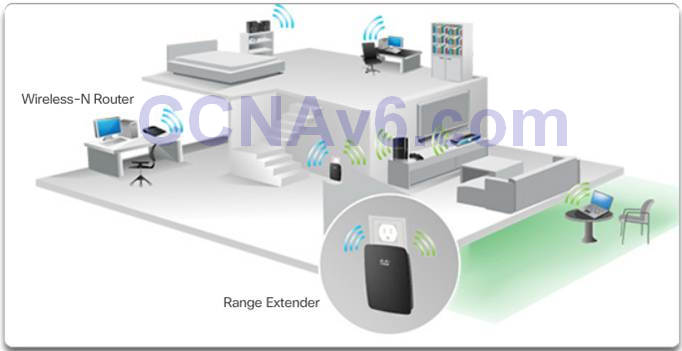
4.1.2 – Purpose of the Physical Layer
4.1.2.1 – The Physical Layer
Provides the means to transport the bits that make up a data link layer frame across the network media.
Accepts a complete frame from the data link layer and encodes it as a series of signals that are transmitted onto the local media.
Encoded bits that comprise a frame are received by either an end device or an intermediate device.
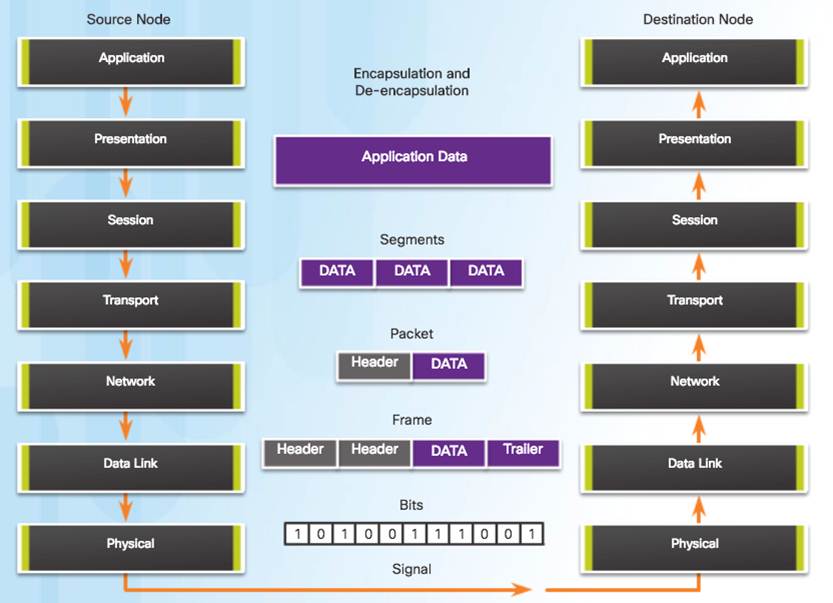
4.1.2.2 – Physical Layer Media
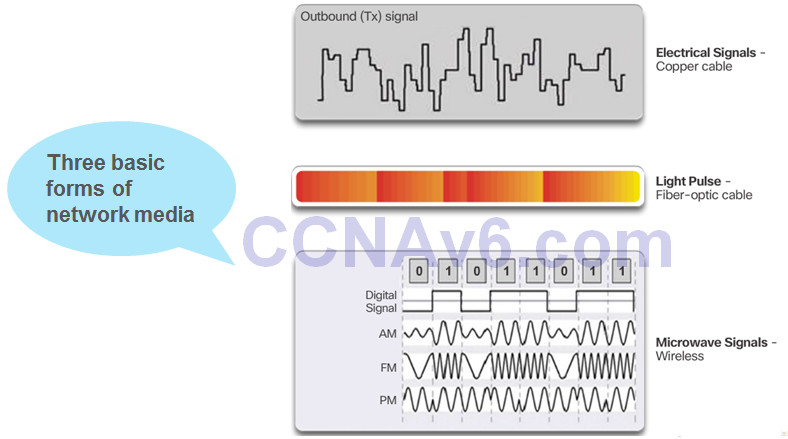
4.1.2.3 – Physical Layer Standards
International Organization for Standardization (ISO)
Telecommunications Industry Association/Electronic Industries Association (TIA/EIA)
International Telecommunication Union (ITU)
American National Standards Institute (ANSI)
Institute of Electrical and Electronics Engineers (IEEE)
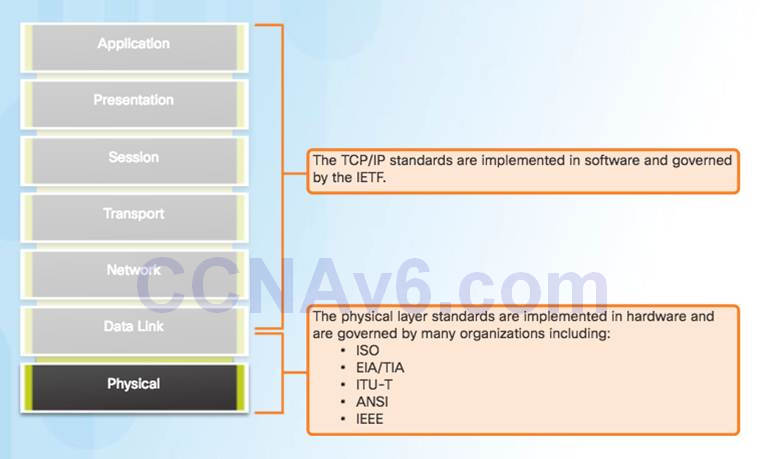
4.1.2.4 – Lab – Identifying Network Devices and Cabling
4.1.2.4 Lab A – Identifying Network Devices and Cabling
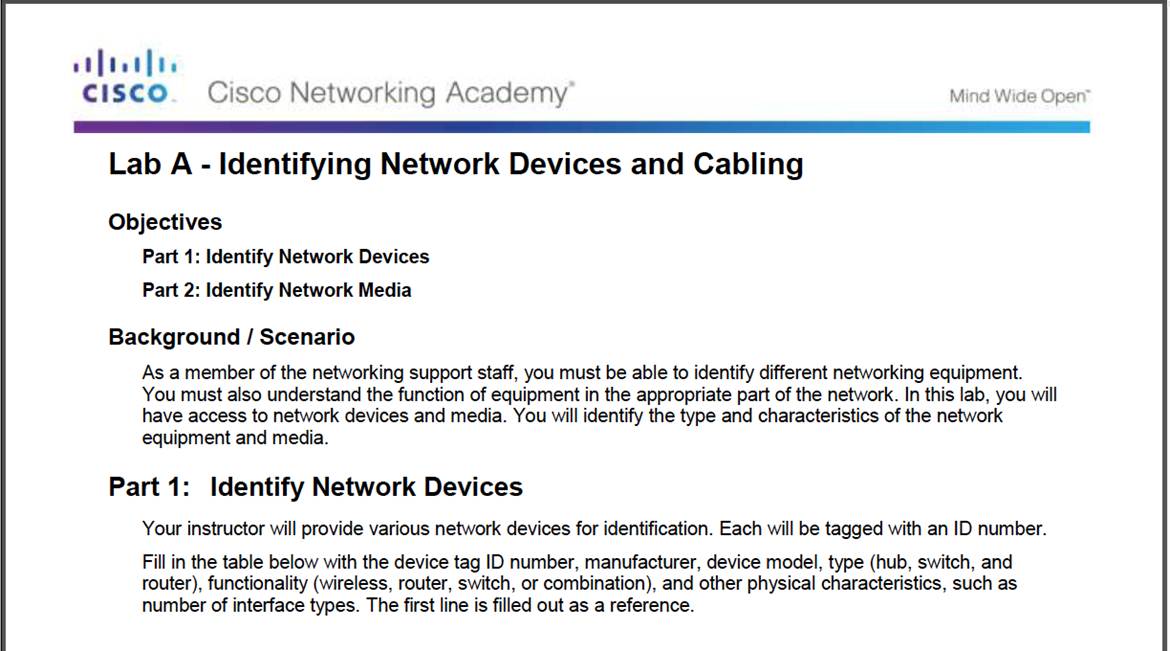
4.1.3 – Physical Layer Characteristics
4.1.3.1– Functions
Encoding
♦ Method of converting a stream of data bits into a predefined “code”.
Signaling Method
♦ Method of representing the bits.
♦ Physical layer standards must define what type of signal represents a “1” and what type of signal represents a “0”.
♦ Long pulse might represent a 1 whereas a short pulse represents a 0.
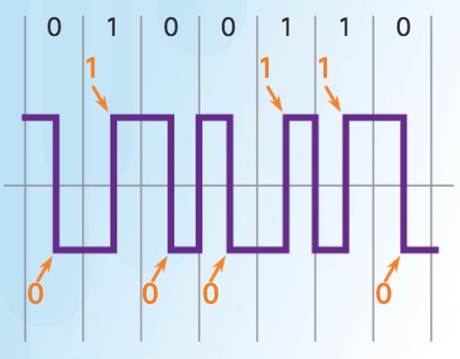
The transition occurs at the middle of each bit period.
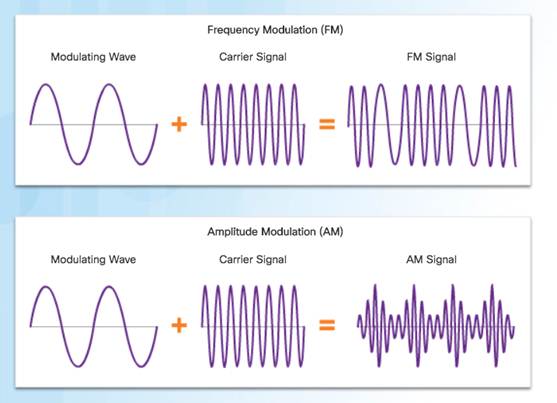
Modulation is the process by which the characteristic of one wave (the signal) modifies another wave (the carrier).
4.1.3.2 – Bandwidth
Capacity of a medium to carry data.
Digital bandwidth measures the amount of data that can flow from one place to another in a given amount of time.
Bandwidth is sometimes thought of as the speed that bits travel, however this is not accurate. In both 10Mb/s and 100Mb/s Ethernet, the bits are sent at the speed of electricity. The difference is the number of bits that are transmitted per second.

4.1.3.3– Throughput
Measure of the transfer of bits across the media over a given period of time.
Usually does not match the specified bandwidth in physical layer implementations due to many factors.
♦ Amount of traffic
♦ Type of traffic
♦ Latency created by network devices encountered between source and destination
Goodput is throughput minus traffic overhead for establishing sessions, acknowledgments, and encapsulation.
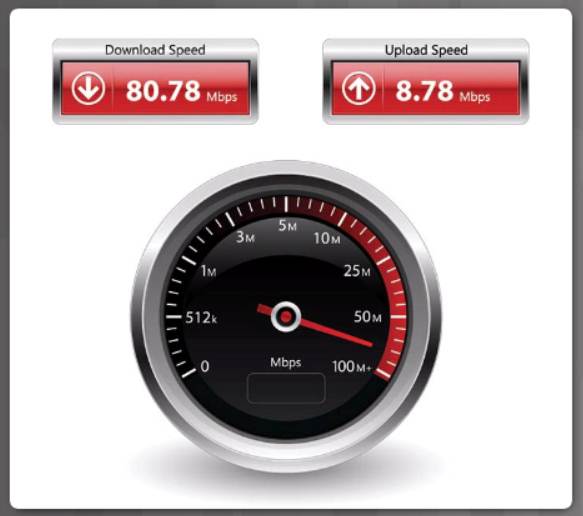
4.1.3.4– Types of Physical Media
The figure shows different types of interfaces and ports available on a 1941 router.
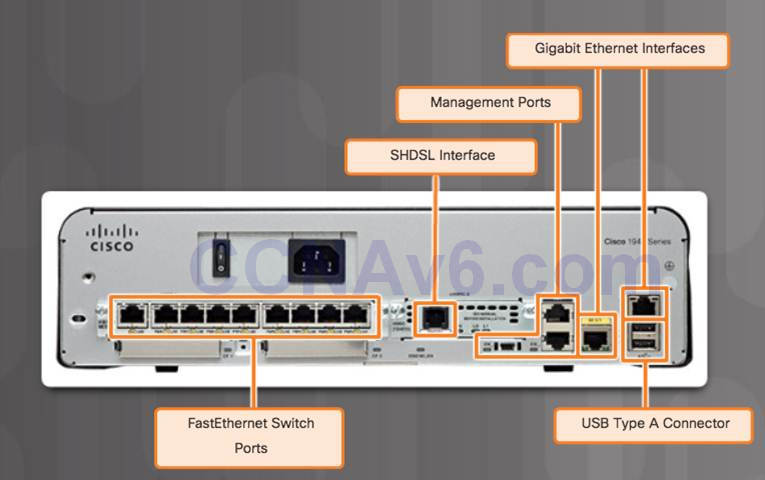
4.2 – Network Media
4.2.1– Copper Cabling
4.2.1.1 – Characteristics of Copper Media
Transmitted on copper cables as electrical pulses.
Attenuation – the longer the signal travels, the more it deteriorates.
All copper media must follow strict distance limitations.
Electromagnetic interference (EMI) or radio frequency interference (RFI) – distorts and corrupts the data signals being carried by copper media.
To counter copper cables wrapped in shielding.
Crosstalk – disturbance caused by the electric or magnetic fields of a signal on one wire to the signal in an adjacent wire.
To cancel crosstalk opposing circuit wire pairs twisted together.
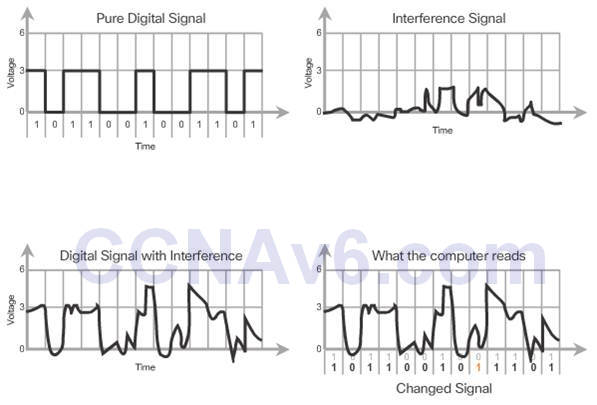
4.2.1.2 – Copper Media
There are three main types of copper media used in networking.
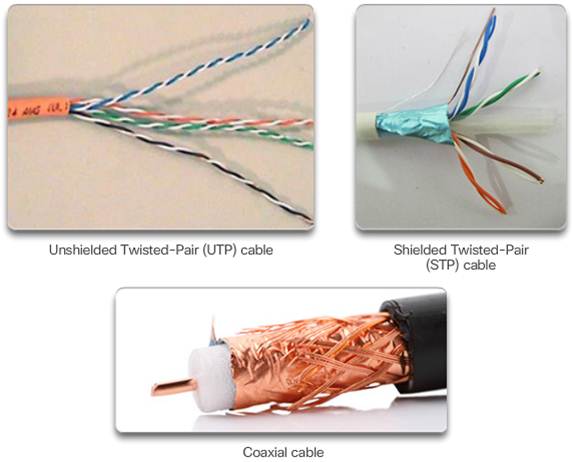
4.2.1.3 – Unshielded Twisted-Pair Cable
UTP cabling is the most common networking media.
♦ Terminated with RJ-45 connectors.
♦ Used for interconnecting network hosts with networking devices such as switches.
♦ Consists of four pairs of color-coded wires that have been twisted together to help protect against signal interference from other wires.
♦ Color codes aid in cable termination.
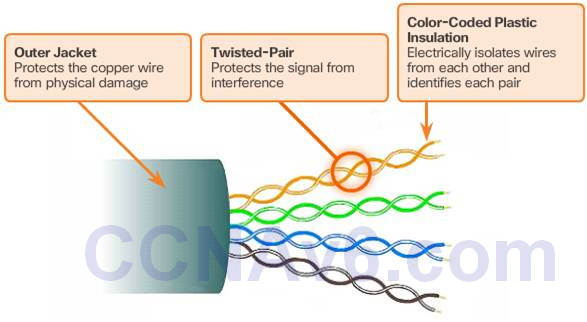
4.2.1.4 – Shielded Twisted-Pair (STP) Cable
STP provides better noise protection than UTP.
STP cable is significantly more expensive and difficult to install.
Uses an RJ-45 connector.
Combines the techniques of shielding to counter EMI and RFI, and wire twisting to counter crosstalk.
Uses four pairs of wires, each wrapped in a foil shield, which are then wrapped in an overall metallic braid or foil.
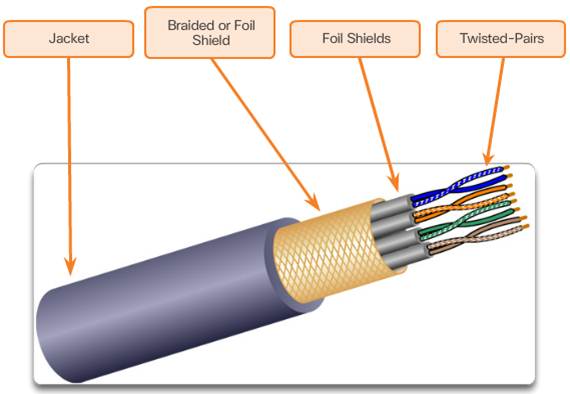
4.2.1.5 – Coaxial Cable
Coax consists of:
♦ A copper conductor used to transmit the electronic signals.
♦ A layer of flexible plastic insulation surrounding a copper conductor.
♦ The insulating material is surrounded in a woven copper braid, or metallic foil, that acts as the second wire in the circuit and as a shield for the inner conductor.
♦ The entire cable is covered with a cable jacket to prevent minor physical damage.
UTP cable has essentially replaced coaxial cable in modern Ethernet installations but is used in:
♦ Wireless installations: Coaxial cables attach antennas to wireless devices.
♦ Cable Internet installations
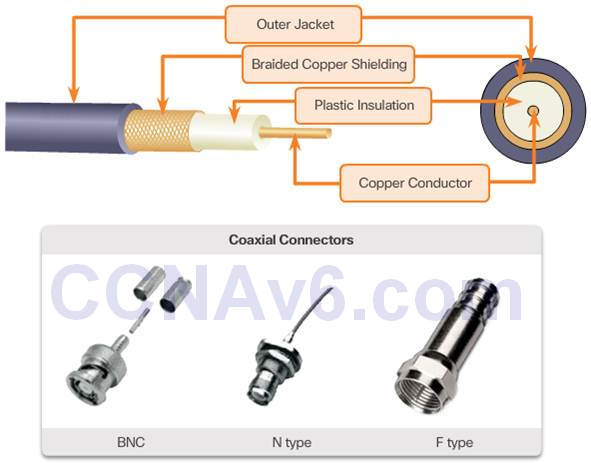
4.2.1.6 – Copper Media Safety
Copper media are susceptible to fire and electrical hazards.
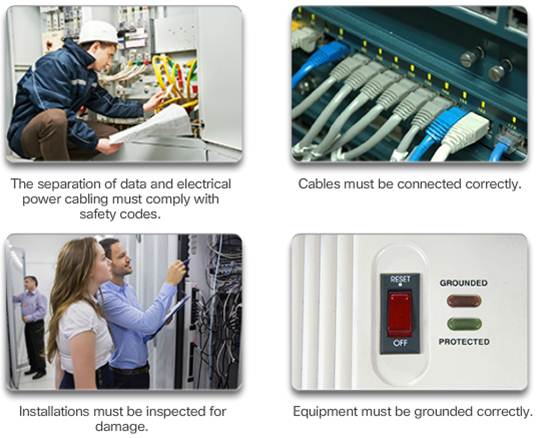
4.2.2 – UTP Cabling
4.2.2.1 – Properties of UTP Cabling
Consists of four pairs of color-coded copper wires that have been twisted together and then encased in a flexible plastic sheath.
Small size can be advantageous during installation.
UTP cable does not use shielding to counter the effects of EMI and RFI.
♦ Cancellation: When two wires in an electrical circuit are placed close together, their magnetic fields are the exact opposite of each other and cancel out any outside EMI and RFI signals.
♦ Varies the number of twists per wire pair to further enhance the cancellation effect of a paired circuit.
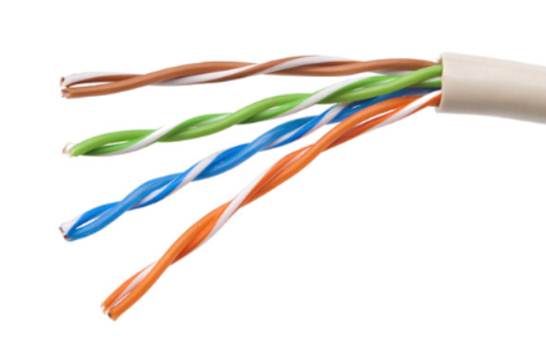
Notice that the orange/orange white pair is twisted less than the blue/blue white pair. Each colored pair is twisted a different number of times.
4.2.2.2 – UTP Cabling Standards
UTP cabling conforms to the standards established by TIA/EIA.
♦ TIA/EIA-568 stipulates the cabling standards for LAN installations
Cat 3 Cable
♦ Used for voice communication
♦ Most often used for phone lines
Cat 5 and 5e Cable
♦ Used for data transmission
♦ Cat5 supports 100 Mb/s and can support 1000Mb/s, but it is not recommended
♦ Cat5e supports 1000 Mb/s
Cat 6 Cable
♦ Used for data transmission
♦ An added separator is between each pair of wires allowing it to function at higher speeds
♦ Support 1000 Mb/s – 10 Gb/s, though 10 Gb/s is not recommended
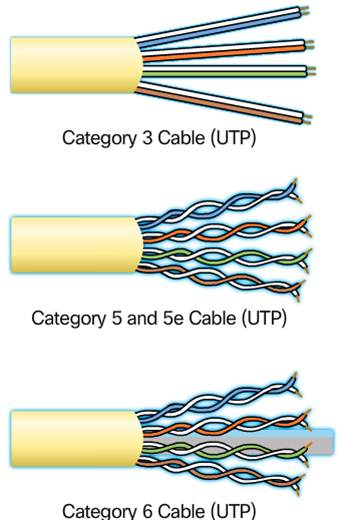
4.2.2.3 – UTP Connectors
UTP cable terminated with an RJ-45 connector.
TIA/EIA-568 standard describes the wire color codes to pin assignments (pinouts) for Ethernet cables.
RJ-45 connector is the male component, crimped at the end of the cable.
Socket is the female component of a network device, wall, cubicle partition outlet, or patch panel.
Essential that all copper media terminations be of high quality to ensure optimum performance with current and future network technologies.
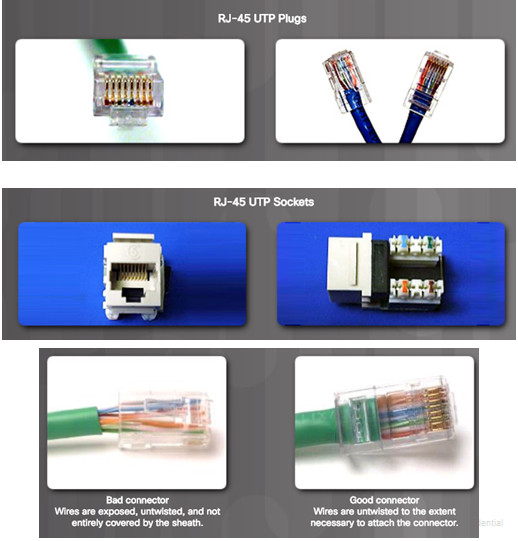
4.2.2.4 – Types of UTP Cable
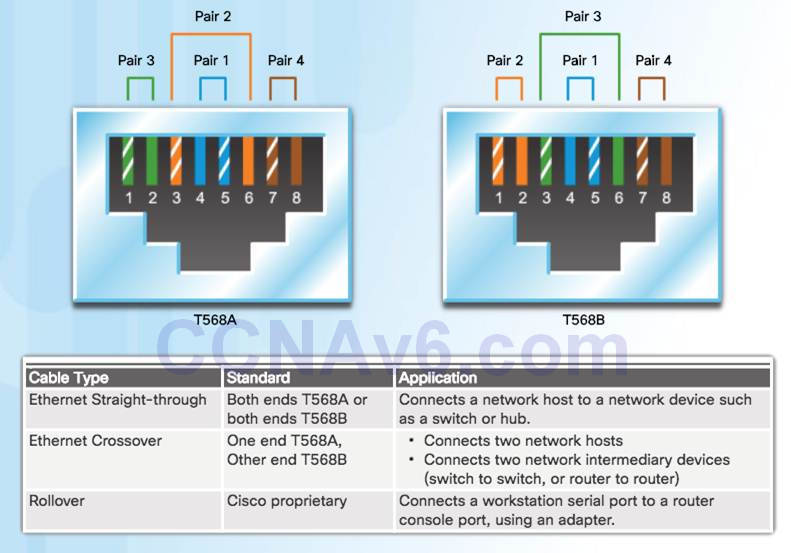
4.2.2.5 – Testing UTP Cables
UTP Testing Parameters:
♦ Wire map
♦ Cable length
♦ Signal loss due to attenuation
♦ Crosstalk
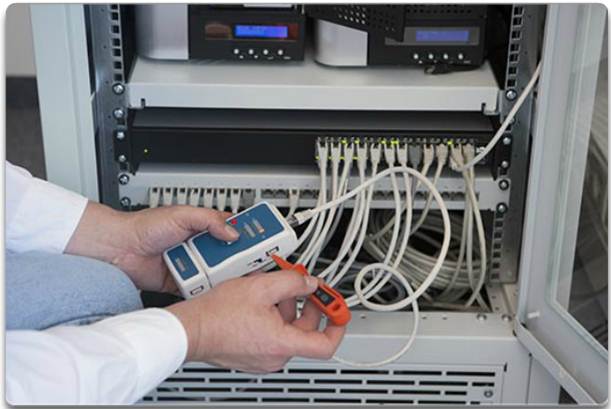
4.2.2.7 – Lab – Building an Ethernet Crossover Cable
4.2.2.7 Lab – Building an Ethernet Crossover Cable
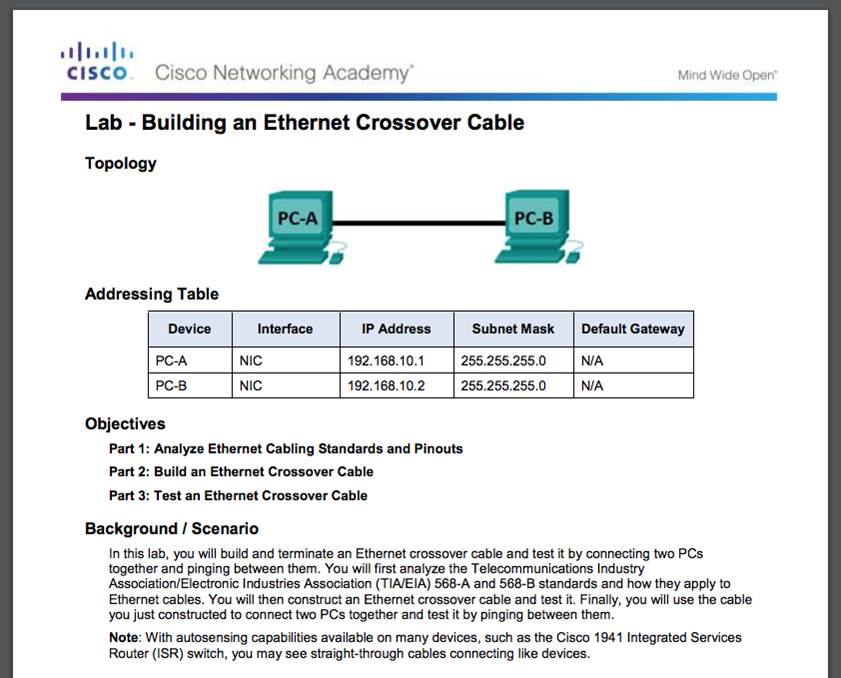
4.2.3 – Fiber Optic Cabling
4.2.3.1 – Properties of Fiber Optic Cabling
Transmits data over longer distances and at higher bandwidths.
Transmit signals with less attenuation and is completely immune to EMI and RFI.
Used to interconnect network devices.
Flexible, but extremely thin, transparent strand of very pure glass, not much bigger than a human hair.
Bits are encoded on the fiber as light pulses.
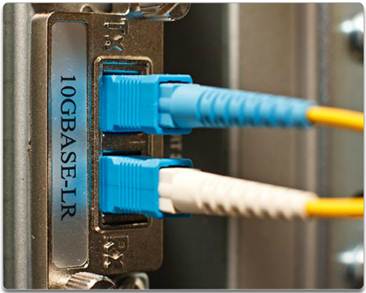
Fiber-optic cabling is now being used in four types of industry:
♦ Enterprise Networks
♦ Fiber-to-the-Home (FTTH)
♦ Long-Haul Networks
♦ Submarine Cable Networks
4.2.3.2 – Fiber Media Cable Design
Jacket
Protects the fiber against abrasion, moisture, and other contaminants. Composition can vary depending on the cable usage.
Strengthening Material
Surrounds the buffer, prevents the fiber cable from being stretched when it is being pulled. Often the same material used to produce bulletproof vests.
Buffer
Used to help shield the core and cladding from damage.
Cladding
Tends to act like a mirror by reflecting light back in the core of the fiber. Keeps light in the core as it travels down the fiber.
Core
Light transmission element at the center of the optical fiber. Core is typically silica or glass. Light pulses travel through the fiber core.
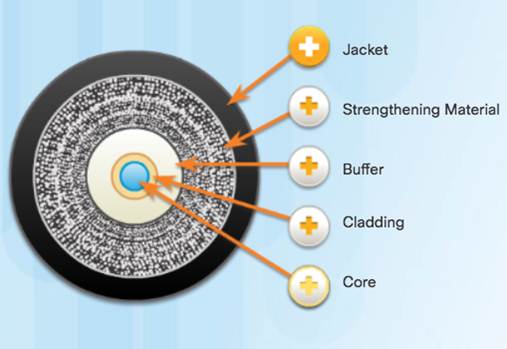

4.2.3.3 – Types of Fiber Media
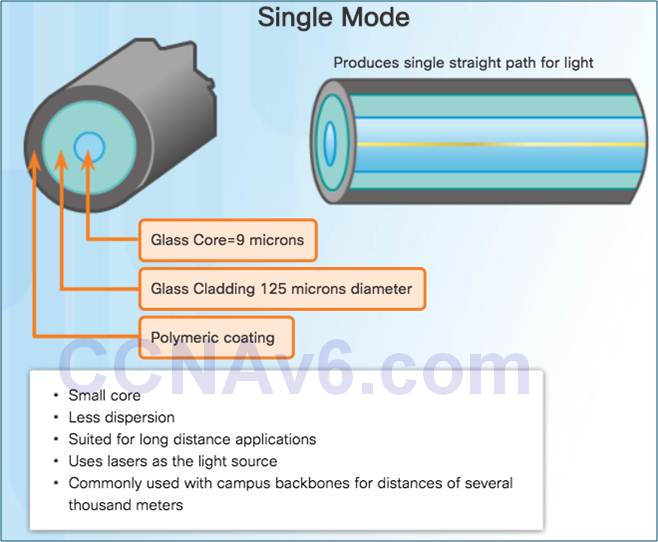
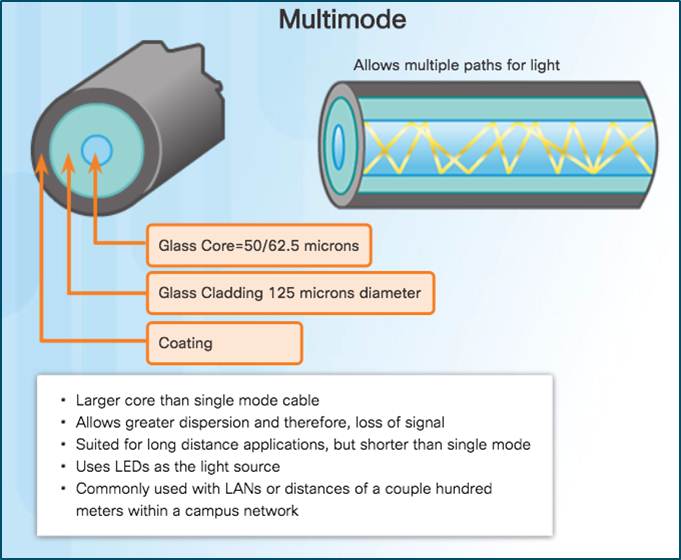
4.2.3.4 – Fiber-Optic Connectors
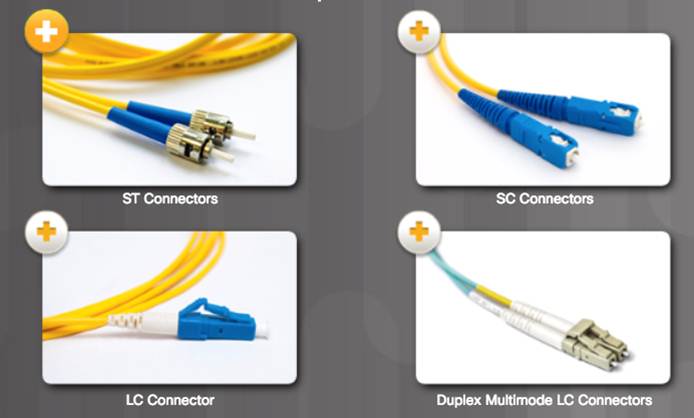
Light can only travel in one direction over optical fiber, two fibers are required to support the full duplex operation.
Straight-Tip (ST) Connectors
♦ One of the first connector types used.
♦ Locks securely with a “twist-on/twist-off”.
Subscriber Connector (SC) Connectors
♦ Referred to as square or standard connector.
♦ Uses a push-pull mechanism to ensure positive insertion.
♦ Used with multimode and single-mode fiber.
Lucent Connector (LC) Simplex Connectors
♦ Smaller version of SC and popular due to size.
Duplex Multimode LC Connectors
♦ Similar to LC but using a duplex connector.
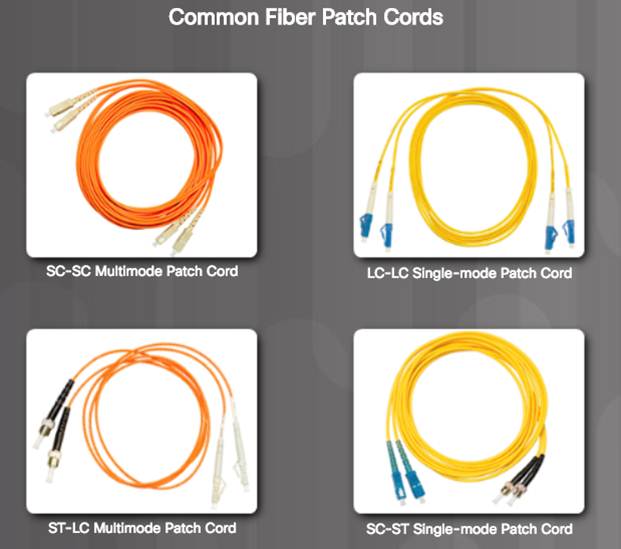
Fiber patch cords are required for interconnecting infrastructure devices.
Yellow jacket is for single-mode fiber cables
Orange (or aqua) for multimode fiber cables.
Fiber cables should be protected with a small plastic cap when not in use.
4.2.3.5 – Testing Fiber Cables
Terminating and splicing fiber-optic cabling requires special training and equipment.
Three common types of fiber-optic termination and splicing errors are:
♦ Misalignment: The fiber-optic media are not precisely aligned to one another when joined.
♦ End gap: The media does not completely touch at the splice or connection.
♦ End finish: The media ends are not well polished, or dirt is present at the termination.
Can be field tested by shining a bright flashlight into one end of the fiber while observing the other end.
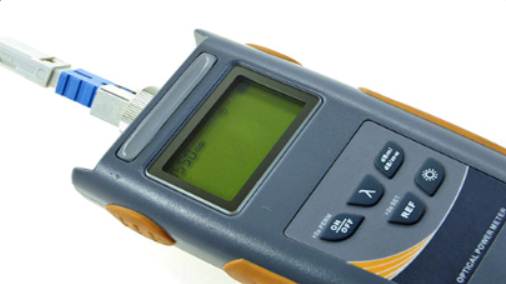
Optical Time Domain Reflectometer (OTDR) can be used to test each fiber-optic cable segment
4.2.3.6 – Fiber versus Copper
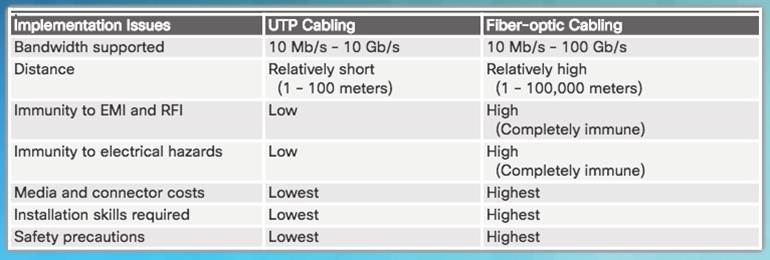
4.2.4 – Wireless Media
4.2.4.1 – Properties of Wireless Media
Wireless media carry electromagnetic signals that represent the binary digits of data communications using radio or microwave frequencies.
Wireless areas of concern:
♦ Coverage area: Construction materials used in buildings and structures, and the local terrain, will limit the coverage.
♦ Interference: Disrupted by such common devices as fluorescent lights, microwave ovens, and other wireless communications.
♦ Security: Devices and users, not authorized for access to the network, can gain access to the transmission.
♦ Shared medium: Only one device can send or receive at a time and the wireless medium is shared amongst all wireless users.

4.2.4.2 – Types of Wireless Media
Wi-Fi: Standard IEEE 802.11
♦ Uses Carrier/Sense Multiple Access/Collision Avoidance (CSMA/CA).
♦ Wireless NIC must wait till channel is clear.
Bluetooth: Standard IEEE 802.15
♦ Wireless Personal Area Network (WPAN)
♦ Uses a device pairing process for distances 1 to 100 meters
WiMAX: Standard IEEE 802.16
♦ Worldwide Interoperability for Microwave Access
♦ Wireless broadband access.

4.2.4.3 – Wireless LAN
Wireless LAN requires the following network devices:
♦ Wireless Access Point (AP): Concentrates the wireless signals from users and connects to the existing copper-based network infrastructure, such as Ethernet.
♦ Wireless NIC adapters: Provide wireless communication capability to each network host.
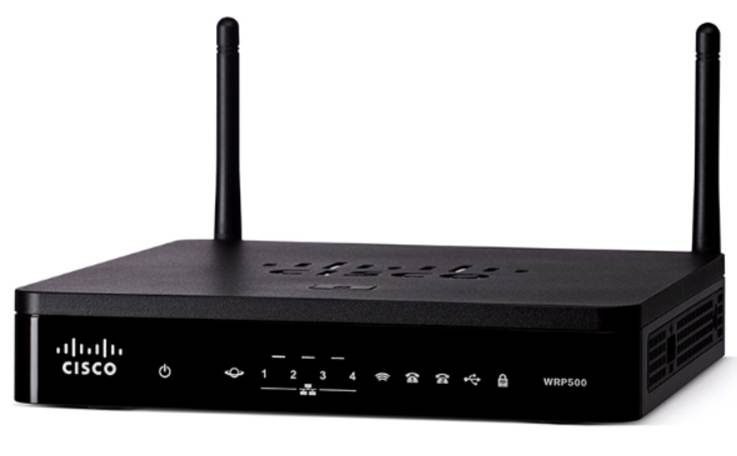
Home and small business wireless routers integrate the functions of a router, switch, and access point into one device.
4.2.4.4 – Packet Tracer – Connecting a Wired and Wireless LAN
4.2.4.4 Packet Tracer – Connecting a Wired and Wireless LAN

4.2.4.5 – Lab – Viewing Wired and Wireless NIC Information
4.2.4.5 Lab – Viewing Wireless and Wired NIC Information
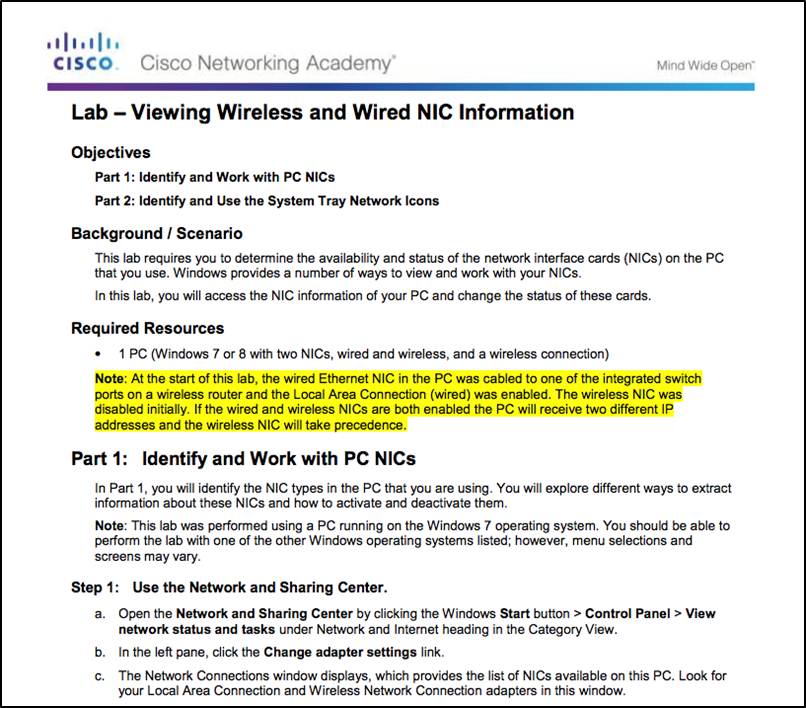
4.3 – Data Link Layer Protocols
4.3.1 – Purpose of the Data Link Layer
4.3.1.1 – The Data Link Layer
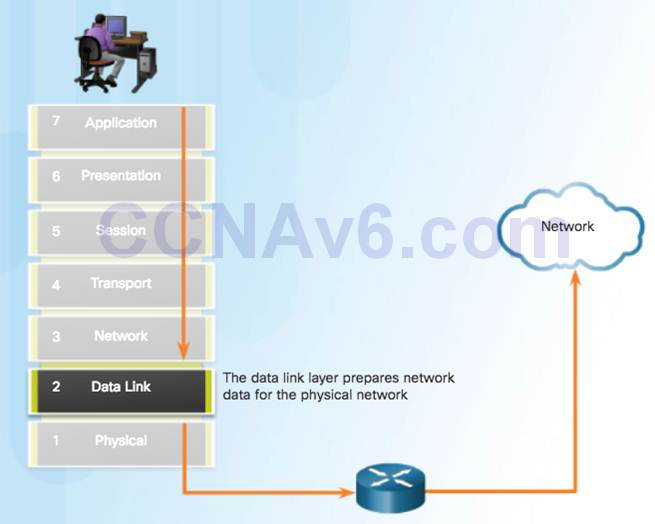
Layer 2 Data Link Addresses
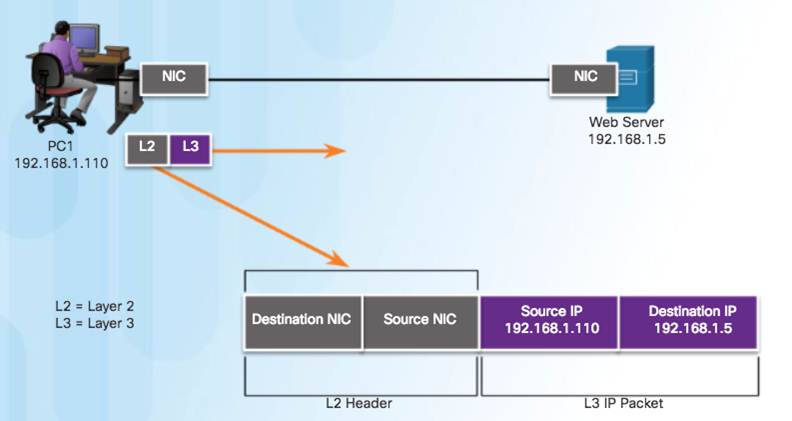
4.3.1.2 – Data Link Sublayers
Data link layer is divided into two sublayers:
Logical Link Control (LLC)
♦ Communicates with the network layer.
♦ Identifies which network layer protocol is being used for the frame.
♦ Allows multiple Layer 3 protocols, such as IPv4 and IPv6, to utilize the same network interface and media.
Media Access Control (MAC)
♦ Defines the media access processes performed by the hardware.
♦ Provides data link layer addressing and access to various network technologies.
♦ Communicates with Ethernet to send and receive frames over copper or fiber-optic cable.
♦ Communicates with wireless technologies such as Wi-Fi and Bluetooth.
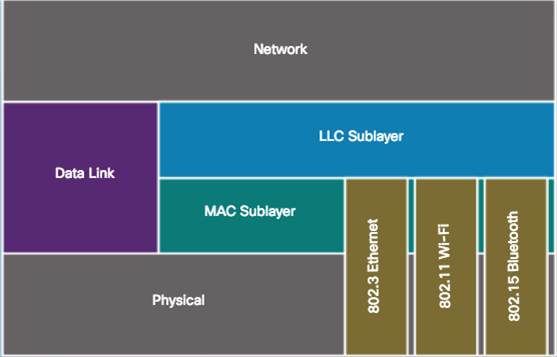
4.3.1.3 – Media Access Control
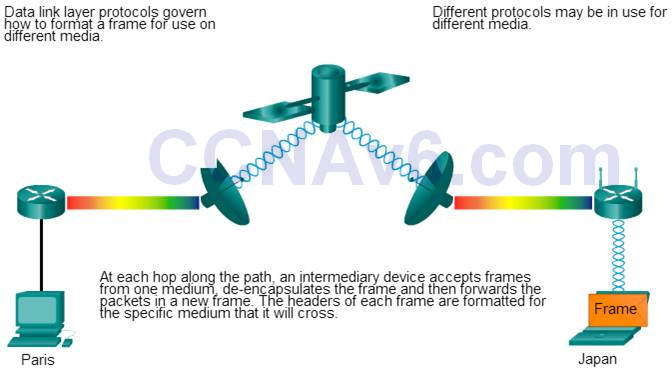
As packets travel from the source host to the destination host, they travel over different physical networks.
Physical networks can consist of different types of physical media such as copper wires, optical fibers, and wireless consisting of electromagnetic signals, radio and microwave frequencies, and satellite links.
4.3.1.4 – Providing Access to Media
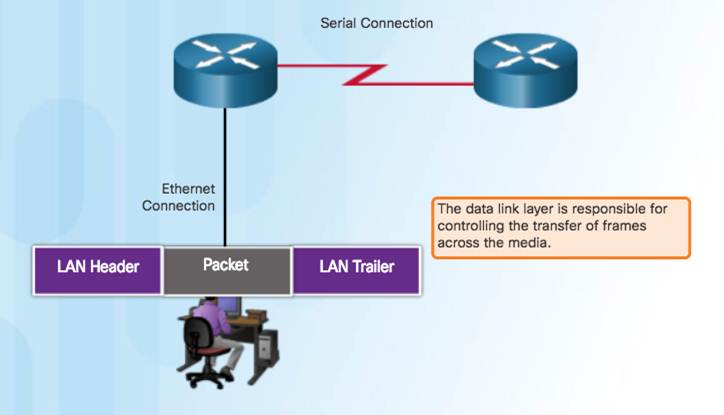
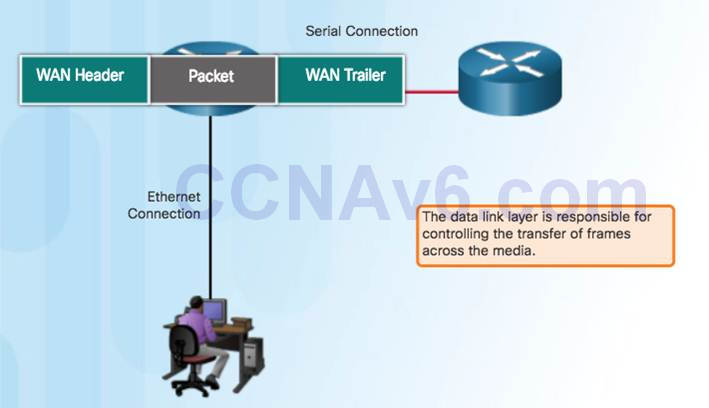
At each hop along the path, a router:
♦ Accepts a frame from a medium
♦ De-encapsulates the frame
♦ Re-encapsulates the packet into a new frame
♦ Forwards the new frame appropriate to the medium of that segment
4.3.1.5 – Data Link Layer Standards
Engineering organizations that define open standards and protocols that apply to the network access layer include:
♦ Institute of Electrical and Electronics Engineers (IEEE)
♦ International Telecommunication Union (ITU)
♦ International Organization for Standardization (ISO)
♦ American National Standards Institute (ANSI)
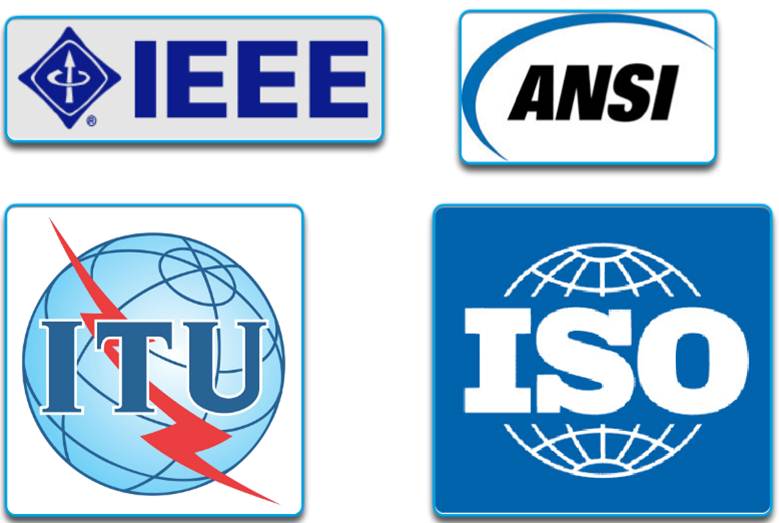
4.4 – Media Access Control
4.4.1 – Topologies
4.4.1.1 – Controlling Access to the Media
Media access control is the equivalent of traffic rules that regulate the entrance of motor vehicles onto a roadway.
The absence of any media access control would be the equivalent of vehicles ignoring all other traffic and entering the road without regard to the other vehicles.
However, not all roads and entrances are the same. Traffic can enter the road by merging, by waiting for its turn at a stop sign, or by obeying signal lights. A driver follows a different set of rules for each type of entrance.
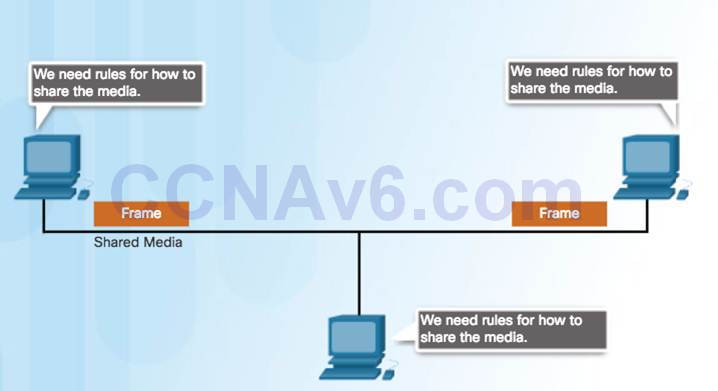
Sharing the Media
4.4.1.2 – Physical and Logical Topologies
Physical topology– Refers to the physical connections and identifies how end devices and infrastructure devices such as routers, switches, and wireless access points are interconnected.
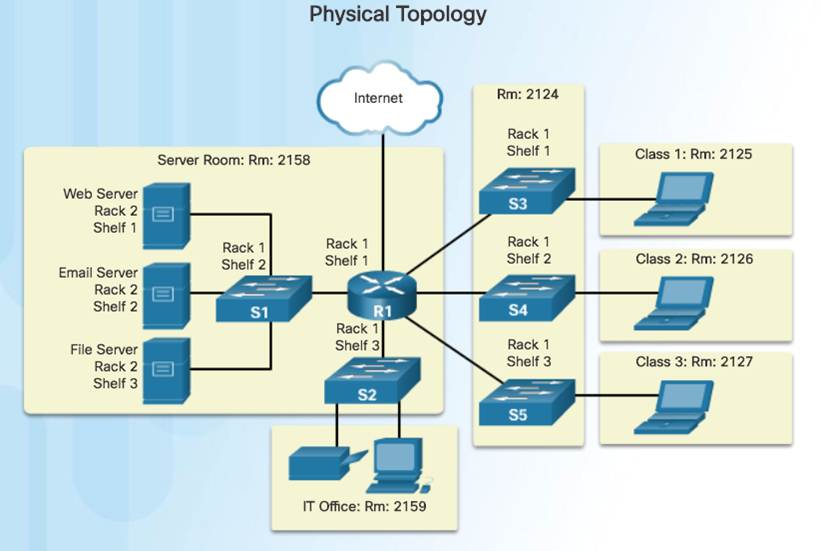
Logical Topology: Refers to the way a network transfers frames from one node to the next. These logical signal paths are defined by data link layer protocols.
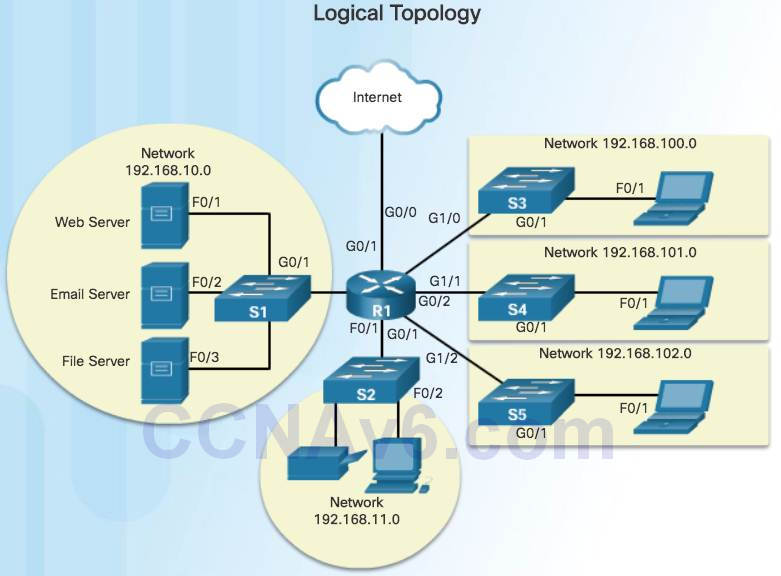
4.4.2 – WAN Topologies
4.4.2.1 – Common Physical WAN Topologies
Point-to-Point –Permanent link between two endpoints.
Hub and Spoke– A central site interconnects branch sites using point-to-point links.
Mesh– Provides high availability, but requires that every end system be interconnected to every other system. Administrative and physical costs can be significant.
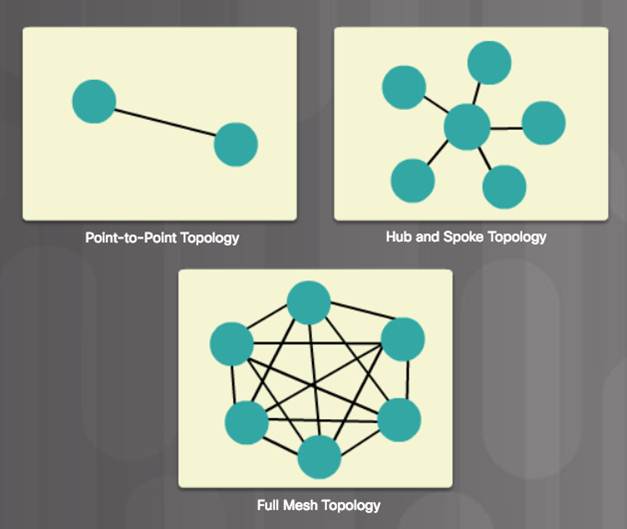
4.4.2.2 – Physical Point-to-Point Topology
Frames are placed on the media by the node at one end and taken from the media by the node at the other end of the point-to-point circuit.
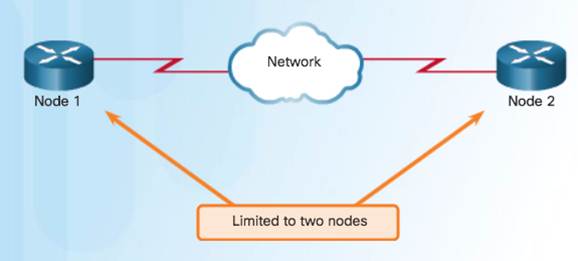
4.4.2.3 – Logical Point-to-Point Topology
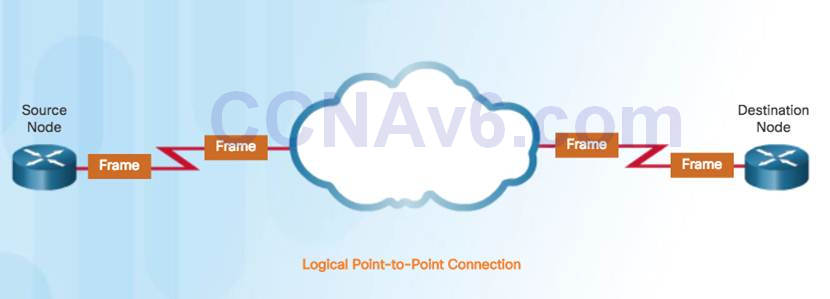
End nodes communicating in a point-to-point network can be physically connected via a number of intermediate devices.
However, the use of physical devices in the network does not affect the logical topology.
The logical connection between nodes forms what is called a virtual circuit.
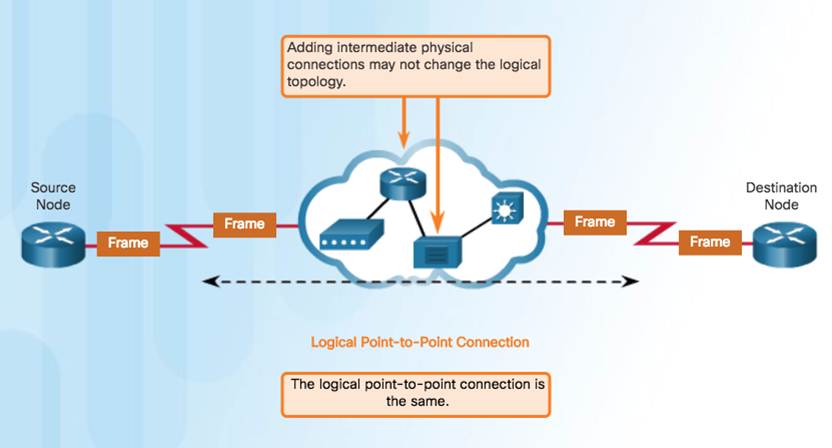
4.4.3 – LAN Topologies
4.4.3.1 – Physical LAN Topologies
Star– End devices are connected to a central intermediate device. Use Ethernet switches.
Extended Star– Additional Ethernet switches interconnect other star topologies.
Bus– Used in legacy networks. All end systems are chained to each other and terminated in some form on each end. Switches are not required to interconnect the end devices. Bus topologies using coax cables were used in legacy Ethernet networks because it was inexpensive and easy to set up.
Ring– End systems are connected to their respective neighbor forming a ring. Unlike the bus topology, the ring does not need to be terminated. Ring topologies were used in legacy Fiber Distributed Data Interface (FDDI) and Token Ring networks.
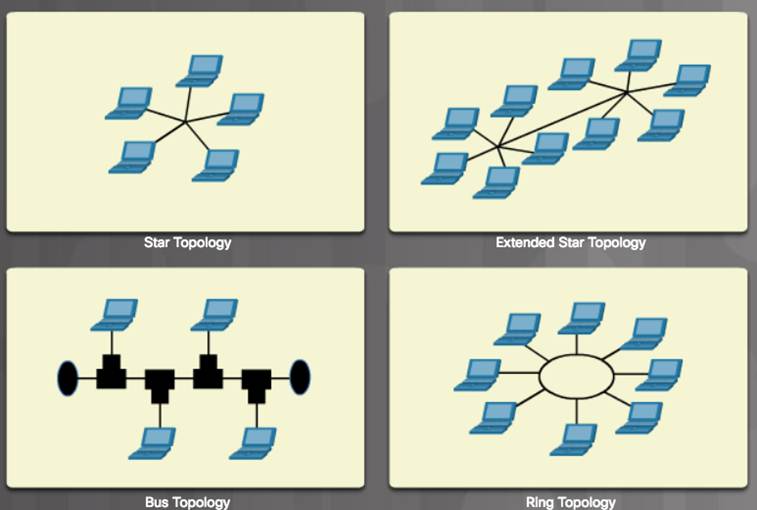
4.4.3.2– Half and Full Duplex
Half-Duplex Communication
♦ Both devices can transmit and receive on the media but cannot do so simultaneously.
♦ Used in legacy bus topologies and with Ethernet hubs.
♦ WLANs also operate in half-duplex.
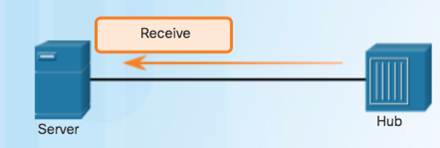
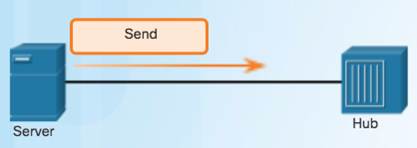
Full-Duplex Communication
♦ Both devices can transmit and receive on the media at the same time.
♦ Data link layer assumes that the media is available for transmission for both nodes at any time.
♦ Ethernet switches operate in full-duplex mode by default, but can operate in half-duplex if connecting to a device such as an Ethernet hub.
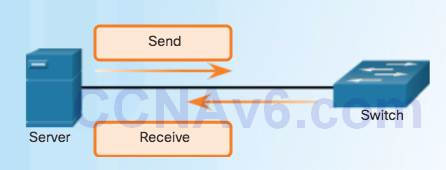
4.4.3.3– Media Access Control Methods
Contention-Based Access
♦ Nodes operate in half-duplex.
♦ Compete for the use of the medium.
♦ Only one device can send at a time.
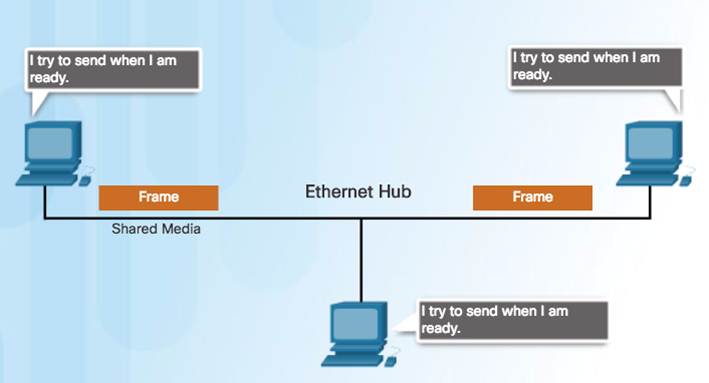
Controlled Access
♦ Each node has its own time to use the medium.
♦ Legacy Token Ring LANs are an example
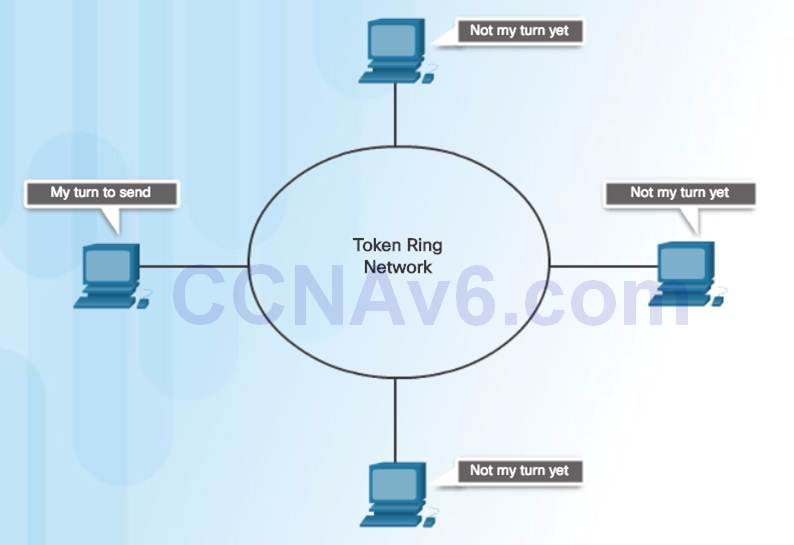
4.4.3.4– Contention-based Access – CSMA/CD
Carrier Sense Multiple Access/Collision Detection (CSMA/CD) process is used in half-duplex Ethernet LANs.
♦ If two devices transmit at the same time, a collision will occur.
♦ Both devices will detect the collision on the network.
♦ Data sent by both devices will be corrupted and will need to be resent.

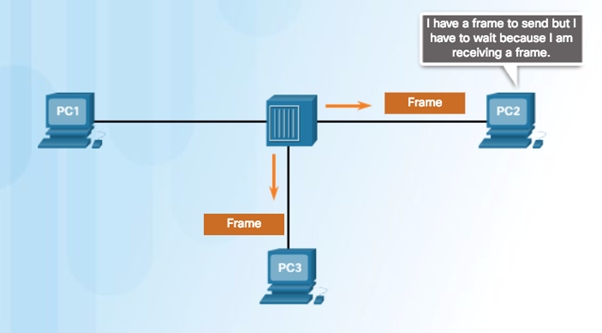

4.4.3.5– Contention-based Access – CSMA/CA
CSMA/CA
♦ Uses a method to detect if the media is clear.
♦ Does not detect collisions but attempts to avoid them by waiting before transmitting.
Note: Ethernet LANs using switches do not use a contention-based system because the switch and the host NIC operate in full-duplex mode.
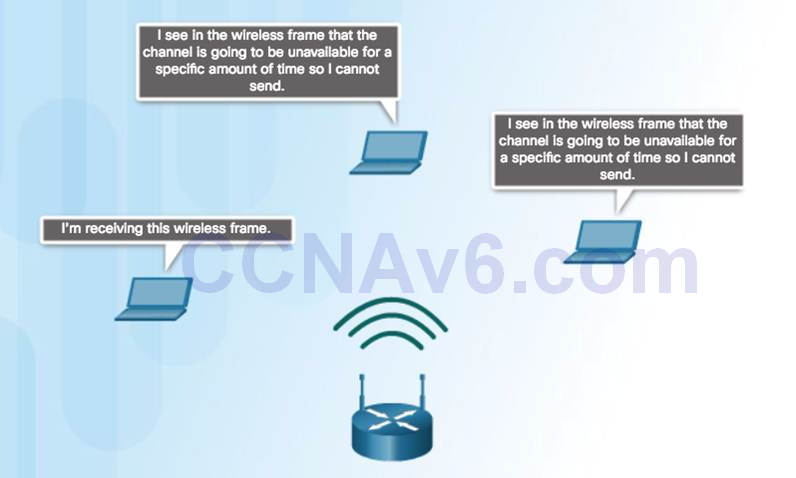
4.4.4 – Data Link Frame
4.4.4.1– The Frame
Each frame type has three basic parts:
♦ Header
♦ Data
♦ Trailer
Structure of the frame and the fields contained in the header and trailer depend on Layer 3 protocol.
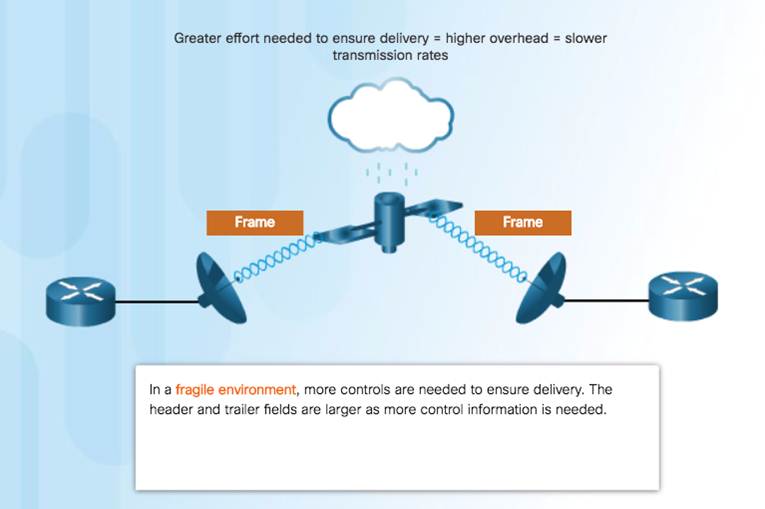
4.4.4.2– Frame Fields
Frame start and stop indicator flags– Identifies the beginning and end limits of the frame.
Addressing– Indicates the source and destination nodes.
Type– Identifies the Layer 3 protocol in the data field.
Control– Identifies special flow control services such as QoS.
Data– Contains the frame payload (i.e., packet header, segment header, and the data).
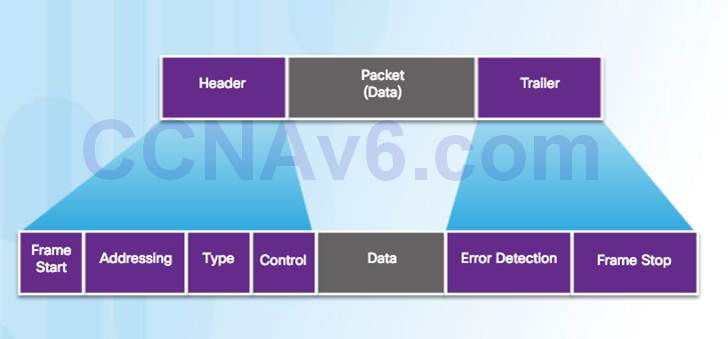
4.4.4.4– Layer 2 Addresses
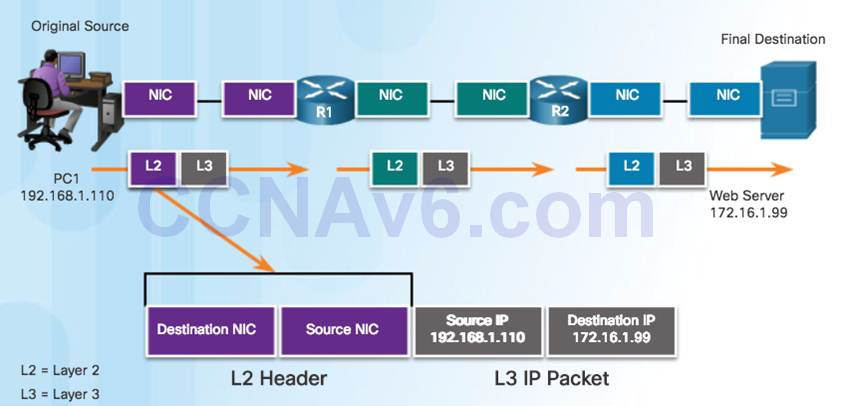
Each data link frame contains the source data link address of the NIC card sending the frame, and the destination data link address of the NIC card receiving the frame.
4.4.4.5 – LAN and WAN Frames
Layer 2 protocol used for a topology is determined by the technology.
Data link layer protocols include:
♦ Ethernet
♦ 802.11 Wireless
♦ Point-to-Point Protocol (PPP)
♦ HDLC
♦ Frame Relay
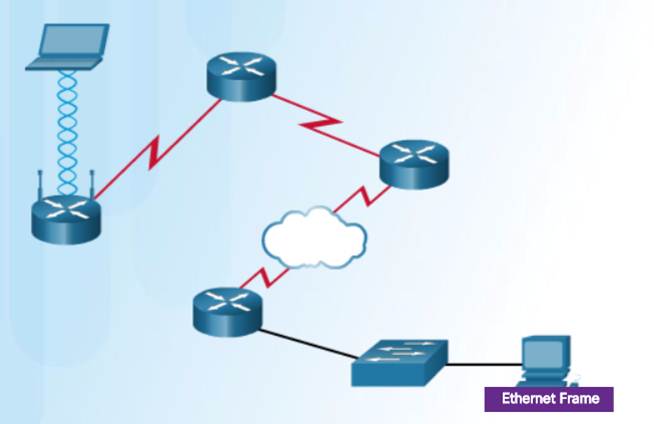
4.5 – Summary
4.5.1 – Conclusion
4.5.1.1 Class Activity – Linked In!
4.5.1.1 Class Activity – Linked In!
4.5.1.2 Chapter 4: Network Access
Explain how physical layer protocols and services support communications across data networks.
Build a simple network using the appropriate media.
Explain the role of the data link layer in supporting communications across data networks.
Compare media access control techniques and logical topologies used in networks.
New Terms and Commands
Section 4.1
Telecommunications Industry Association/Electronic Industries Association (TIA/EIA)
International Telecommunication Union (ITU)
American National Standards Institute (ANSI)
Institute of Electrical and Electronics Engineers (IEEE)
Manchester encoding
bandwidth
throughput
goodput
Section 4.2
electromagnetic interference (EMI)
radio frequency interference (RFI)
crosstalk
unshielded twisted-pair
shielded twisted-pair
coaxial cable
coax
fiber-optic cable
Section 4.3
Logical Link Control (LLC)
Media Access Control (MAC)
Section 4.4
physical topology
logical topology
virtual circuit
half-duplex
full-duplex
Carrier Sense Multiple Access/Collision Detection (CSMA/CD)
Carrier Sense Multiple Access/Collision Avoidance (CSMA/CA)
